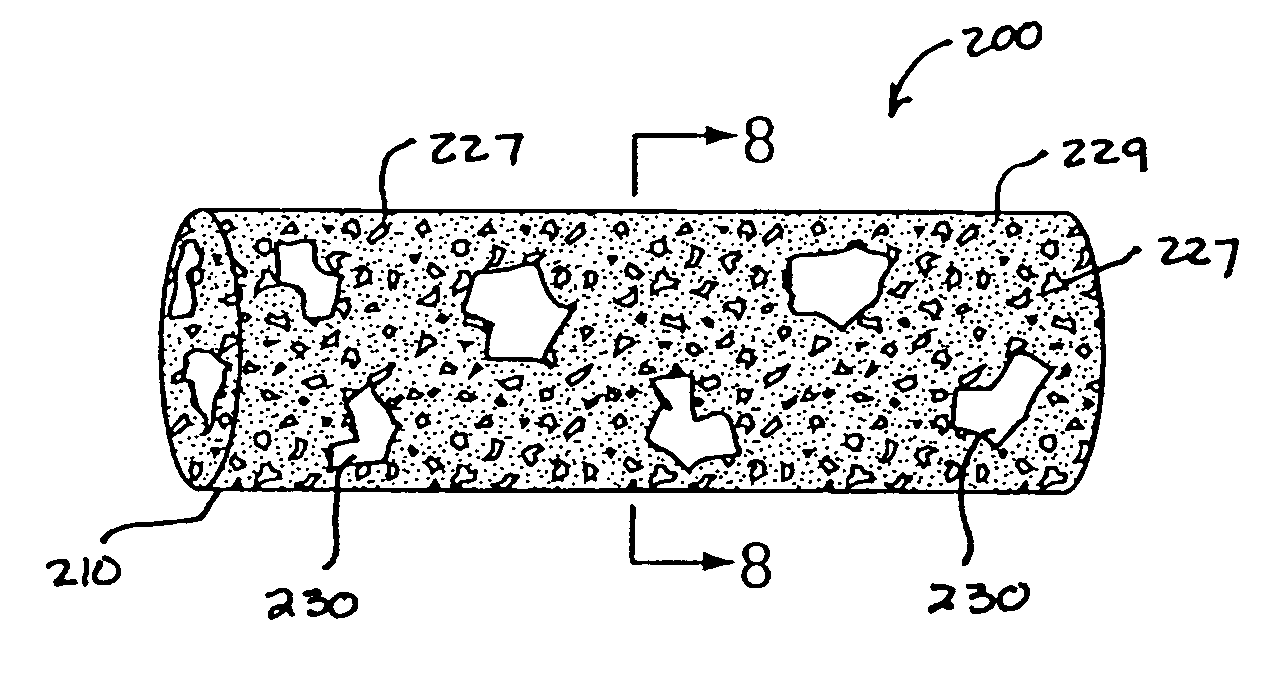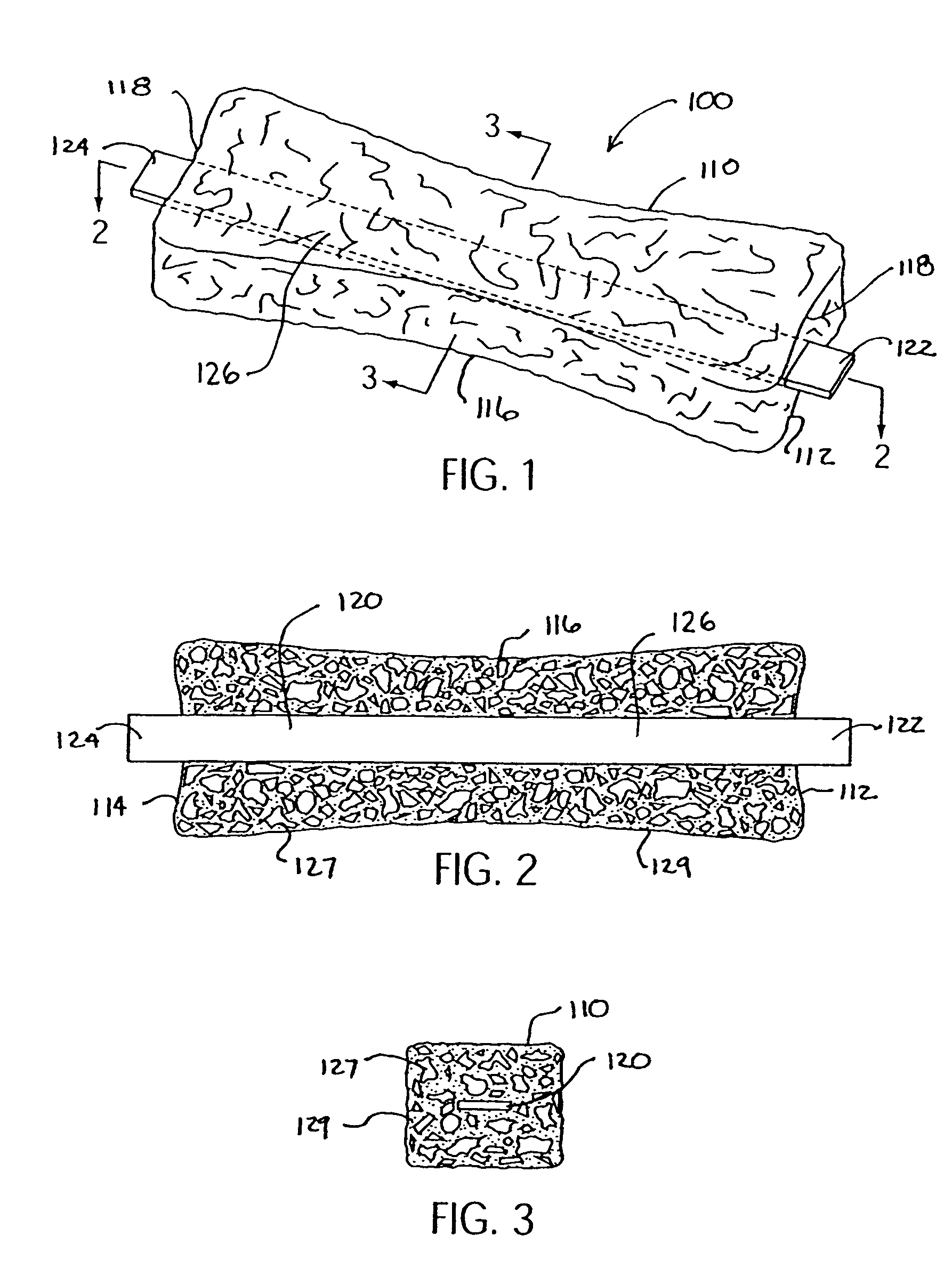Dog bone with jerky pieces
a chewing toy and dog bone technology, applied in the field of chewing toys for dogs, can solve the problems of not getting excited about chewing toys, difficult and dangerous to digest, and hardness, and achieve the effects of satisfying a dog's curiosity and instinctive urge, enhancing the desire of chewing, and safe ingested by dogs
- Summary
- Abstract
- Description
- Claims
- Application Information
AI Technical Summary
Benefits of technology
Problems solved by technology
Method used
Image
Examples
Embodiment Construction
[0044]Referring now to the drawing, the present invention chew toy for carnivorous animals, e.g., domestic dogs, and method for making are illustrated in FIGS. 1–6. The chew toy is designated generally by reference numeral 100 in FIG. 1. A first method of making the inventive chew toy is described in conjunction with FIGS. 4 and 5. An alternative method of making the inventive chew toy is described in conjunction with FIG. 6. Alternative chew toy embodiments are shown in FIGS. 7–8 and 10, and an alternative method of making a chew toy is schematically illustrated in FIG. 9.
[0045]In each of the embodiments herein, the article of the subject invention is referred to as a “chew toy.” The most common use of the present article is a toy, though it can also be a therapeutic device, a medicinal conveyance device, or a dental hygiene device for example, thus the term “toy” is not intended to limit the present article which may simply be referred to as a “chew.”
[0046]Further, in each embodim...
PUM
 Login to View More
Login to View More Abstract
Description
Claims
Application Information
 Login to View More
Login to View More - R&D
- Intellectual Property
- Life Sciences
- Materials
- Tech Scout
- Unparalleled Data Quality
- Higher Quality Content
- 60% Fewer Hallucinations
Browse by: Latest US Patents, China's latest patents, Technical Efficacy Thesaurus, Application Domain, Technology Topic, Popular Technical Reports.
© 2025 PatSnap. All rights reserved.Legal|Privacy policy|Modern Slavery Act Transparency Statement|Sitemap|About US| Contact US: help@patsnap.com



